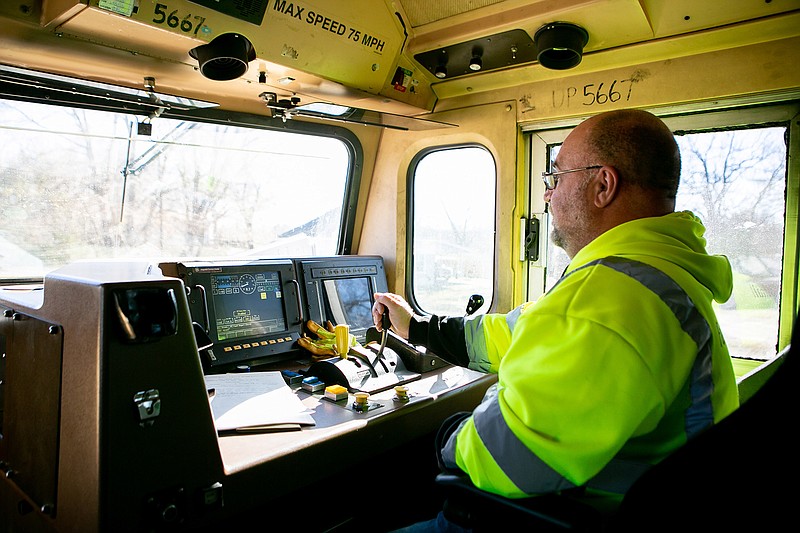Seven Tips for Staying Safe Around Tracks and Trains
Look both ways Always expect a train. Trains can run on any track, at any time, in either direction. After a train passes, look both ways before proceeding. Don't get stuck on the track Before you cross, be sure there is room on the other side to completely clear the tracks. Trains overhang the tracks by at least 3 feet on each side. For safety, leave at least 15 feet between the rear of your vehicle and the nearest rail. Do not shift gears while crossing. Get out and get away If your vehicle stalls at a crossing, get everyone out and far away immediately, even if you do not see a train. Call the emergency notification number posted on or near the crossing or notify local law enforcement. If you see a train, wait Don't be tempted to try to beat a train. An approaching train may be closer and traveling faster than it appears. Trains cannot stop quickly The average freight train traveling 55 miles per hour takes a mile or more to stop. That's 18 football fields. If the locomotive engineer can see you, it's too late to stop the train. Watch for vehicles that must stop Most states require school buses, commercial buses and trucks carrying hazardous materials to stop at every highway-rail grade crossing. If you see a problem, report it Report any problem-stalled vehicle on the tracks, damaged sign, obstructed view, signal malfunction-to the railroad immediately. Call the emergency notification number posted on or near the crossing, or notify local law enforcement. Source: Operation Lifesaver Rail Safety Education-oli.orgSome impatient Bowie County drivers got a surprise lesson in railroad crossing safety Tuesday, caught up in a law enforcement effort to spotlight the issue.
Maud, Texas, police and constables, Bowie County Sheriff's Department deputies, Texas Department of Public Safety troopers, and Union Pacific Railroad police teamed up to catch railroad crossing scofflaws in the act.
A locomotive with troopers aboard traveled the tracks between Texas Highway 8 in Maud and Kings Highway in Texarkana as other officers waited at crossings in between. As the engine approached each crossing, signal lights and barrier arms were activated. Drivers who chose to maneuver around the barriers and cross the tracks were promptly pulled over and faced a fine of up to $200.
The effort was part of Union Pacific's Crossing Accident Reduction Education and Safety-or UP CARES-program.
"We're educating the public on the dangers they can face if they're not paying attention when they come up to the crossings," said Darin Archer, a UP Police senior special agent.
Because freight trains are too massive to stop quickly, being in one's path is an extremely hazardous situation. A locomotive alone weighs 410,000 pounds. The longest train UP engineer Bradley Burns ever drove had six engines, was 7,000 feet long and weighed 26,000 tons, he said. But even an average freight train moving at 55 miles per hour can travel more than a mile after drivers engage its emergency braking system.
"They do not forgive. The train will always win," UP conductor Jonathan Hensley said.
In their 30 years of combined experience, neither Burns nor Hensley has driven a train that struck a person on the tracks, but the close calls are too numerous to count, they said.
"Even though these tracks have been here 150 years, people act like they're not there," Hensley said.
That kind of inattention is a frequent cause of accidents, and drivers should be "hyper-aware" as they approach crossings, Archer said.
"When you're coming up on a railroad crossing-I don't care what kind of crossing it is, whether you think a train's coming or not, or whether it's a busy crossing, none of that matters-just get yourself prepared that when you're approaching that crossing, be completely aware of your environment. Listen, turn all your music down, tell the kids to hush," he said.
Failing to stop at a railroad crossing is never an option, Archer said.
"Once that arm is down, it's a barrier, and every state law in the union is once that gate is down-really, once that light activates and the gates are coming down-that's considered a barrier, a wall. So it doesn't matter why it's down. Even if a train's not coming or you don't think a train is coming, you don't go through that barrier.
"And at a minimum, if there's no gate and the flashers are flashing, you must stop. That's a stoplight, and you must stop and allow the right of way of the train," he said.
At crossings without signals, drivers should be even more careful.
"I encourage people to stop, look both ways, listen, make sure it's completely clear, and then proceed across," Archer said.


